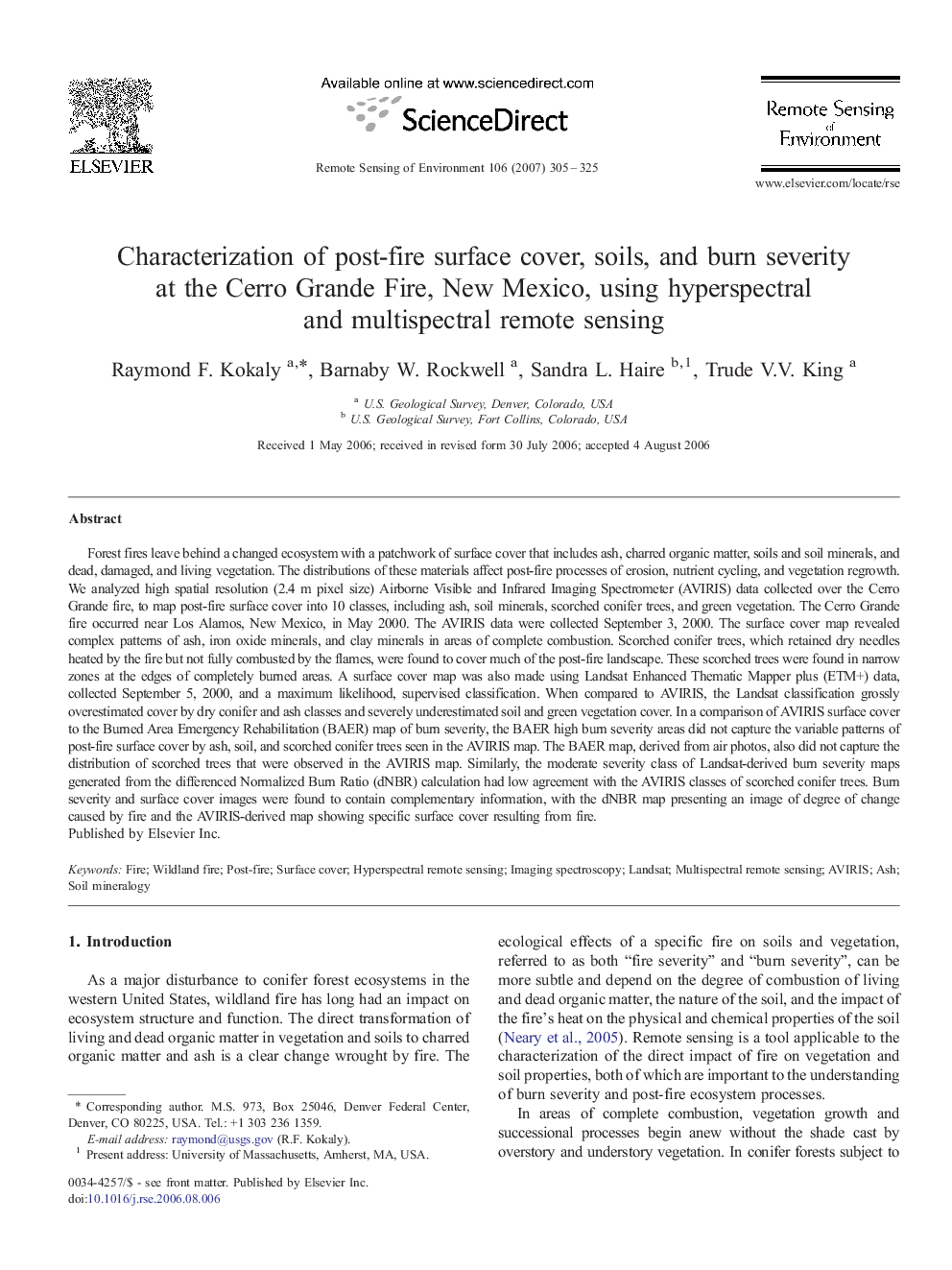| کد مقاله | کد نشریه | سال انتشار | مقاله انگلیسی | نسخه تمام متن |
|---|---|---|---|---|
| 4460775 | 1621353 | 2007 | 21 صفحه PDF | دانلود رایگان |

Forest fires leave behind a changed ecosystem with a patchwork of surface cover that includes ash, charred organic matter, soils and soil minerals, and dead, damaged, and living vegetation. The distributions of these materials affect post-fire processes of erosion, nutrient cycling, and vegetation regrowth. We analyzed high spatial resolution (2.4 m pixel size) Airborne Visible and Infrared Imaging Spectrometer (AVIRIS) data collected over the Cerro Grande fire, to map post-fire surface cover into 10 classes, including ash, soil minerals, scorched conifer trees, and green vegetation. The Cerro Grande fire occurred near Los Alamos, New Mexico, in May 2000. The AVIRIS data were collected September 3, 2000. The surface cover map revealed complex patterns of ash, iron oxide minerals, and clay minerals in areas of complete combustion. Scorched conifer trees, which retained dry needles heated by the fire but not fully combusted by the flames, were found to cover much of the post-fire landscape. These scorched trees were found in narrow zones at the edges of completely burned areas. A surface cover map was also made using Landsat Enhanced Thematic Mapper plus (ETM+) data, collected September 5, 2000, and a maximum likelihood, supervised classification. When compared to AVIRIS, the Landsat classification grossly overestimated cover by dry conifer and ash classes and severely underestimated soil and green vegetation cover. In a comparison of AVIRIS surface cover to the Burned Area Emergency Rehabilitation (BAER) map of burn severity, the BAER high burn severity areas did not capture the variable patterns of post-fire surface cover by ash, soil, and scorched conifer trees seen in the AVIRIS map. The BAER map, derived from air photos, also did not capture the distribution of scorched trees that were observed in the AVIRIS map. Similarly, the moderate severity class of Landsat-derived burn severity maps generated from the differenced Normalized Burn Ratio (dNBR) calculation had low agreement with the AVIRIS classes of scorched conifer trees. Burn severity and surface cover images were found to contain complementary information, with the dNBR map presenting an image of degree of change caused by fire and the AVIRIS-derived map showing specific surface cover resulting from fire.
Journal: Remote Sensing of Environment - Volume 106, Issue 3, 15 February 2007, Pages 305–325